Spider-Man: Miles Morales Review - Leaner Than Its Older Brother
/Marvel’s Spider-Man on the Playstation 4 is one of the most delightful games of 2018, and one of, if not the best, Spider-Man games ever. But when Playstation Studios and Insomniac Games announced Spider-Man: Miles Morales for both the Playstation 4 and Playstation 5, a short-lived confusion ensued as to whether the game would be a true sequel, or more of an expansion to the original, and honestly, you could make a case in calling it either way. Spider-Man: Miles Morales is a shorter but leaner Spider-Man game. And it is as much fun as its predecessor.
Alright people, let’s do this one last time.
Spider-Man: Miles Morales begins a year after the first game’s conclusion. After revealing to a (now oddly baby-faced) Peter Parker that he was bitten by a genetically-enhanced spider, Brooklyn native Miles Morales spends the following months training under the tutelage of everyone’s favorite wallcrawler. When an emergency trip has Peter leaving the defense of New York City solely in Miles’ hands, our hero comes face-to-fists with new baddies called The Underground, who are led by one of Spider-Man’s known enemies, The Tinkerer.
One of the many things that stood out to me about Spider-Man: Miles Morales is the level of care given to the world-building and storytelling. While its predecessor balanced telling a classic superhero story with establishing both its characters and the flavor of New York City, Spider-Man: Miles Morales steps it up with themes relevant to today’s generation, tackling issues relating to family, representation, looking up to your heroes and mentors, and dealing with authority. I enjoyed the game’s overall plot, a fresh take on Miles’ origin in a nicely-paced campaign devoid of much of the padding and filler missions seen in Peter Parker’s last outing.
I’m actually glad to see that in addition to Miles being the main protagonist, most supporting characters are well-realized people of color, such as Miles’ best bud Ganke, who’s his eyes and ears during missions, his Mom Rio Morales, who’s running for political office in their new home in Harlem, podcaster Danika Hart (who balances out J. Jonah Jameson’s hilarious “Just the Facts” podcast), store owner Teo, and street artist Hailey. Miles’ social feed, the game’s version of Twitter, helps to flesh out the characters, as do the bounties of side missions and quests from the people of New York featured via Ganke’s “Friendly Neighborhood” app.
Insomniac Games did some real work on Spider-Man: Miles Morales’ story and world. In an industry that often shies away from today’s issues about racism and its politics, it’s nice to see AAA developers taking current events into account.
Back In Black
We won’t get too much into the core gameplay of Spider-Man: Miles Morales, since the game engine and mechanics are almost identical to those of Marvel’s Spider-Man - that is, an open-world sandbox superhero game where you swing around the streets of New York City going to the next story objective, or answering calls for help by fighting crime and doing side missions. Or, if so inclined, you can just explore NYC while listening to JJ’s podcast, ‘discover’ hidden time capsule items that you and your childhood buddy hid around the whole city, or infiltrate a hidden enemy base and grab some loot that you can use to upgrade your spider-gadgets or suits.
While the general flow is similar to Marvel’s Spider-Man, there are less collectibles to fuss about, and the sandbox elements can sometimes get pretty stale, especially during the post-campaign endgame, when all that’s left to do is to collect whatever you missed during your story mode run. The shorter length might be a negative thing for some completionists wanting a longer experience, but for someone like me who doesn’t have the luxury of time on my hands, it is a blessing. At least the endgame does come with the option to replay chapters and missions from the campaign.
A Brand-New Day
Despite the game being familiar to those that played Marvel's Spider-Man, Miles Morales looks and feels new. While the controls are the same, Miles animates very differently from Peter. The first time I saw him do a “leap of faith” followed by his new swing and aerial animations, I felt a big fat grin on my face. The more I swung around NYC as Miles, the more I was reminded that this is the Miles Morales I remember. I wouldn’t be surprised if Insomniac Games used the actual swing animations from Spider-Man: Into The Spider-Verse here (the Spider-verse suit is one of the pre-order suits, after all).
Since we are playing as Miles, the game wonderfully showcases his unique set of powers. You have access to a plethora of his trademark “Venom Strike” moves that leave enemies stunned and open for free hits. Miles can also turn himself invisible for a short period of time, which can help a lot when it comes to infiltrating bases and performing stealth knockdowns on criminals. These new moves can be upgraded via skill tree. Also present are new gadgets that Miles can use while fighting crime. Aside from the standard web ball, Miles can throw Holo-Drones to aid him in fights, gravity well bombs to rile people into one area, and remote electricity mines that can incapacitate unknowing enemies. It’s less than the number of gadgets that Peter can carry in the first game, but hey, rookie superheroes gotta start somewhere, right?
Also new in this game is the added dynamic of having Ganke as a partner. In Marvel’s Spider-Man, you fight crime and save the day as Peter Parker alone (with the occasional help from Mary Jane Watson and banter with other characters). Peter’s tendency to swing (and quip) solo is his M.O., but Miles’ buddy Ganke is constantly in his ear, guiding and assisting him. Ganke rings you in and guides you to your objectives. He hacks into security systems to unlock doors for you. After a crime-busting episode, Miles and Ganke may nerd out about what happened. Sometimes he’ll tell you that the Friendly Neighborhood app he developed got 52 new downloads thanks to your heroic efforts. It’s not really an added gameplay mechanic, but I find having a “man in the chair” makes the whole crime fighting experience much more fun compared to going it solo.
Quest-tracking this time around is a bit easier thanks to Ganke’s Friendly Neighborhood app. Swiping your Dualshock 4’s trackpad to the left will pull out the app, showing you a list of active crimes around the city that you can stop. It also lists “requests” from people in NYC that downloaded the FN app. Taking on requests will start side missions that are most of the time entertaining to play through and will reward you with more gear/suit upgrades as well as some backstory and lore regarding the side characters.


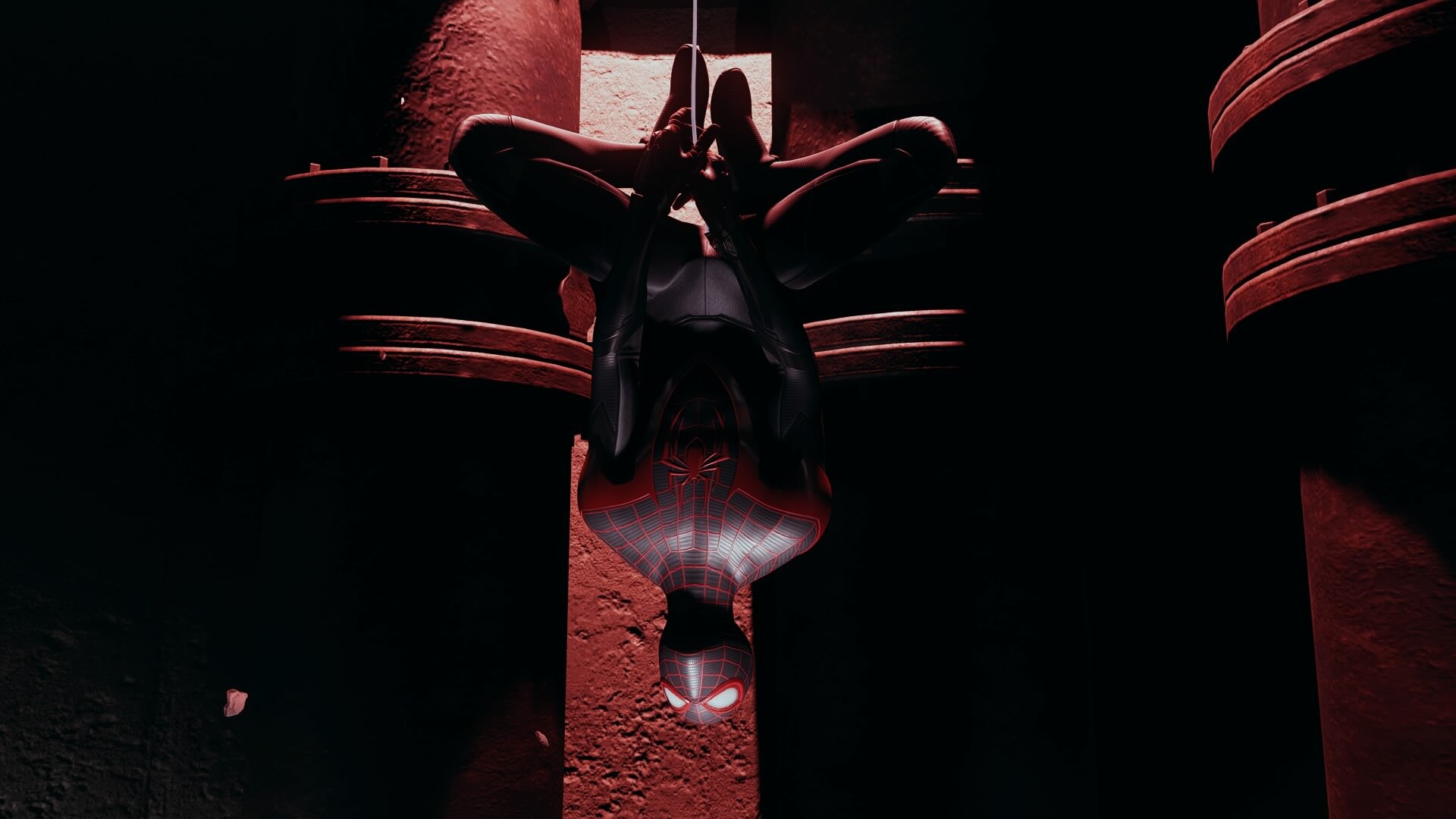
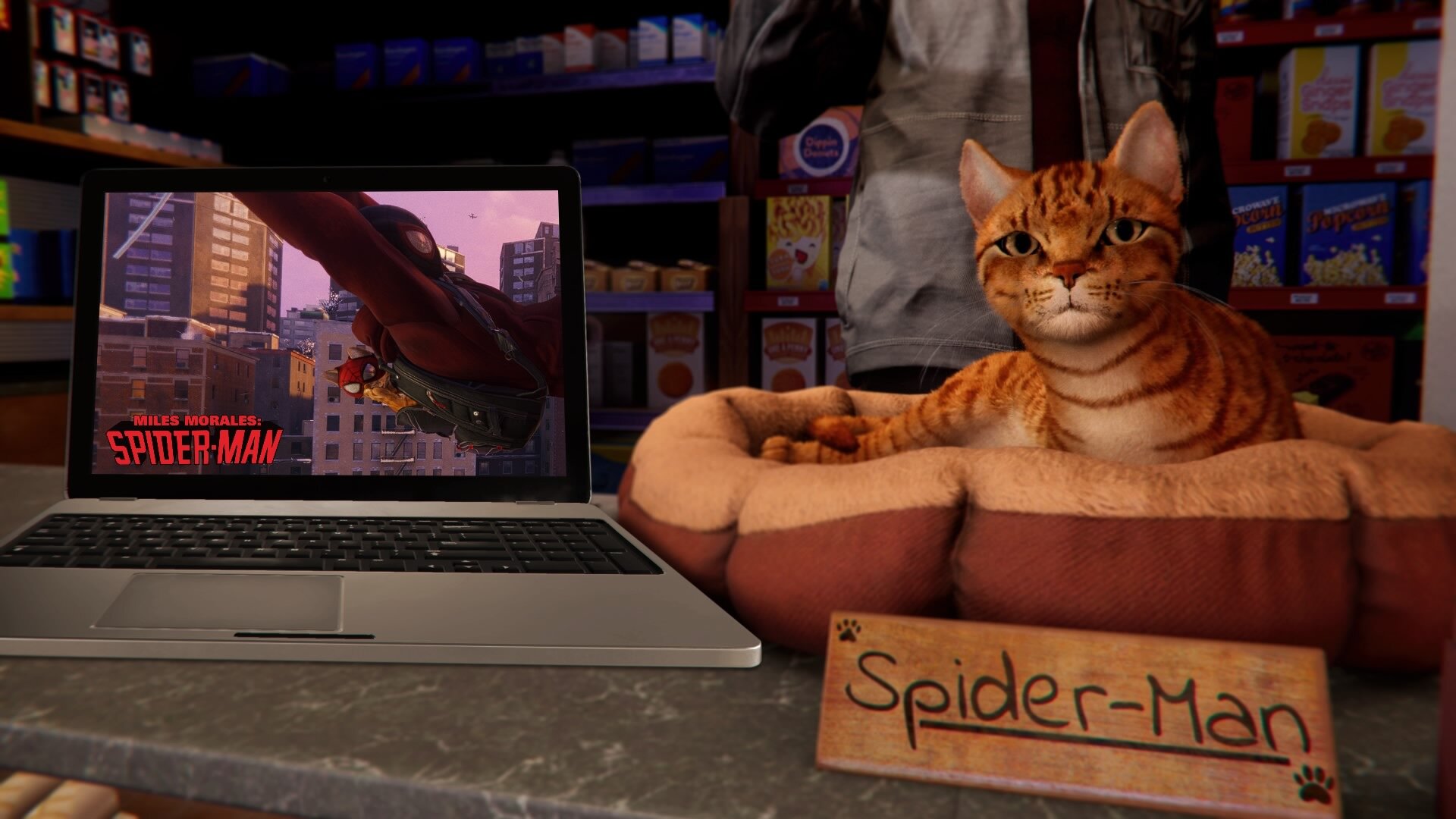
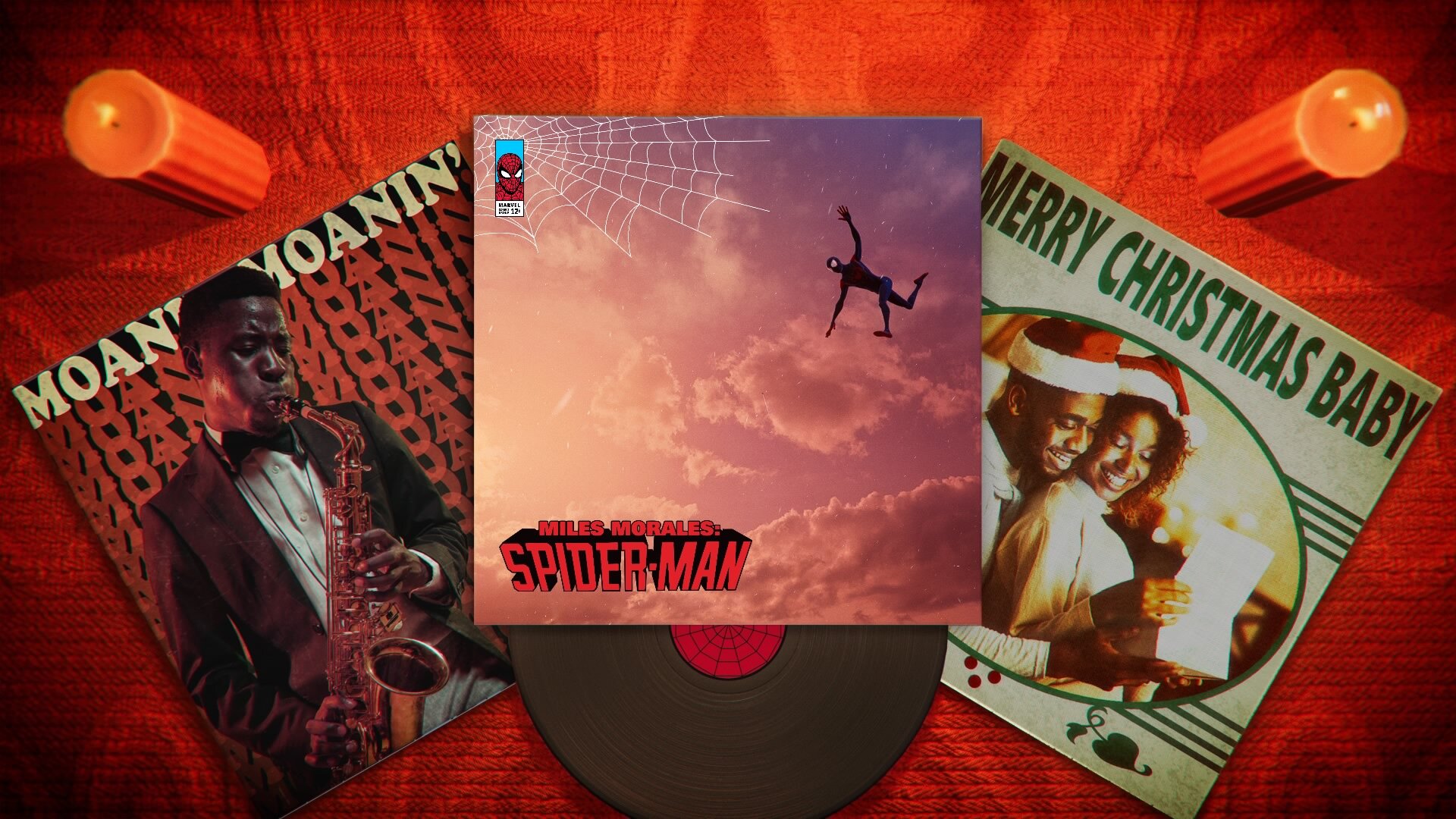
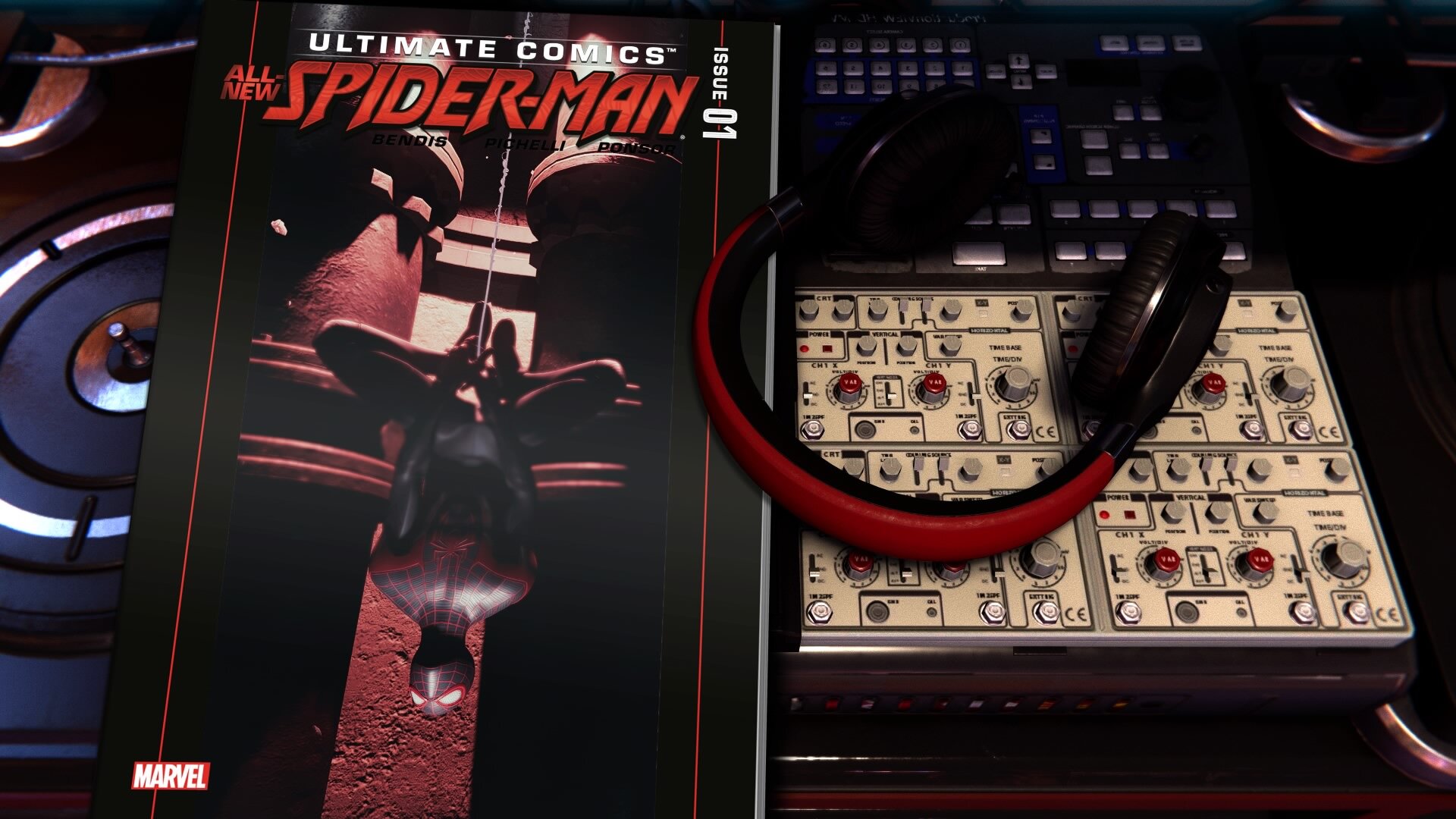
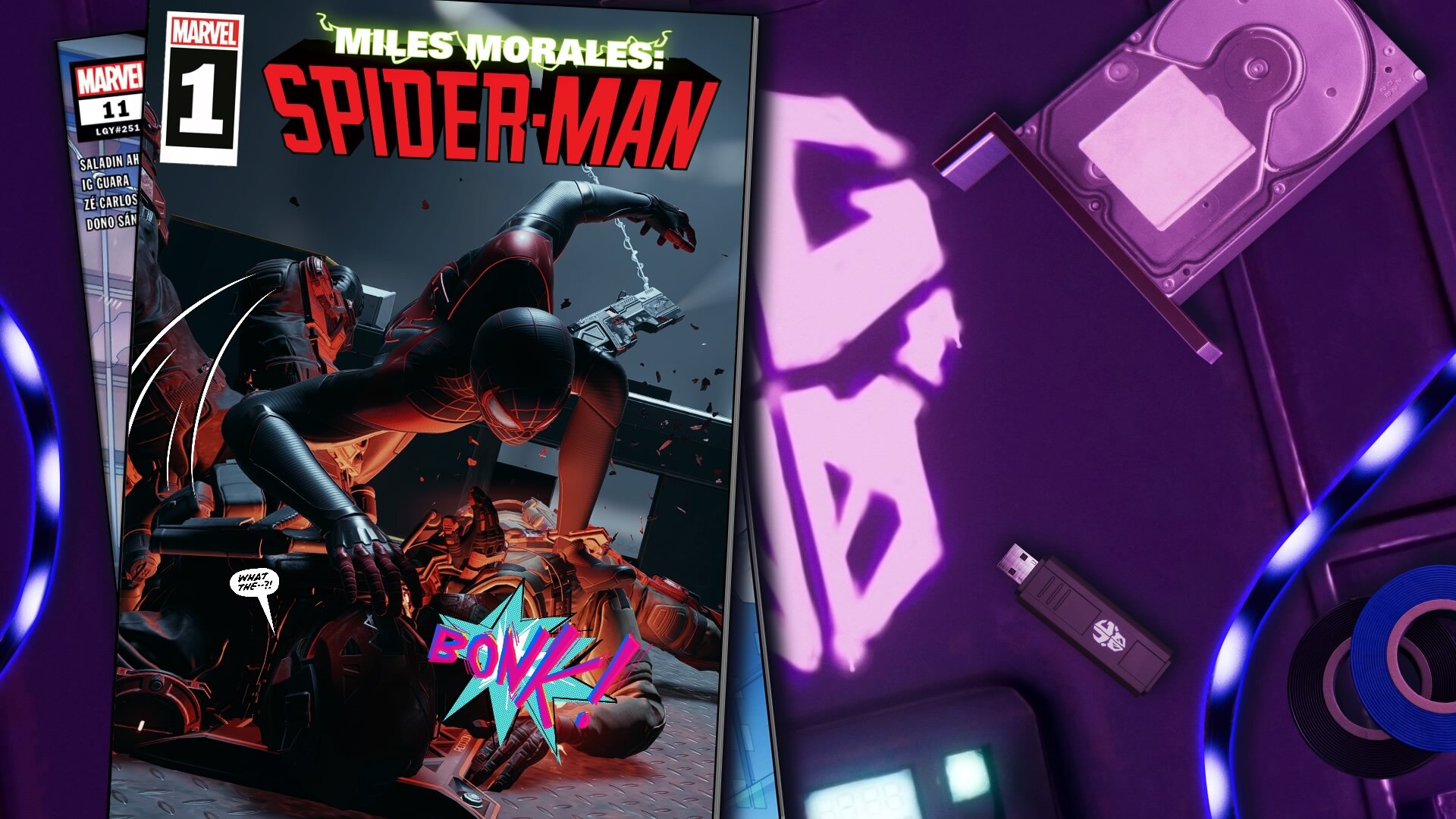
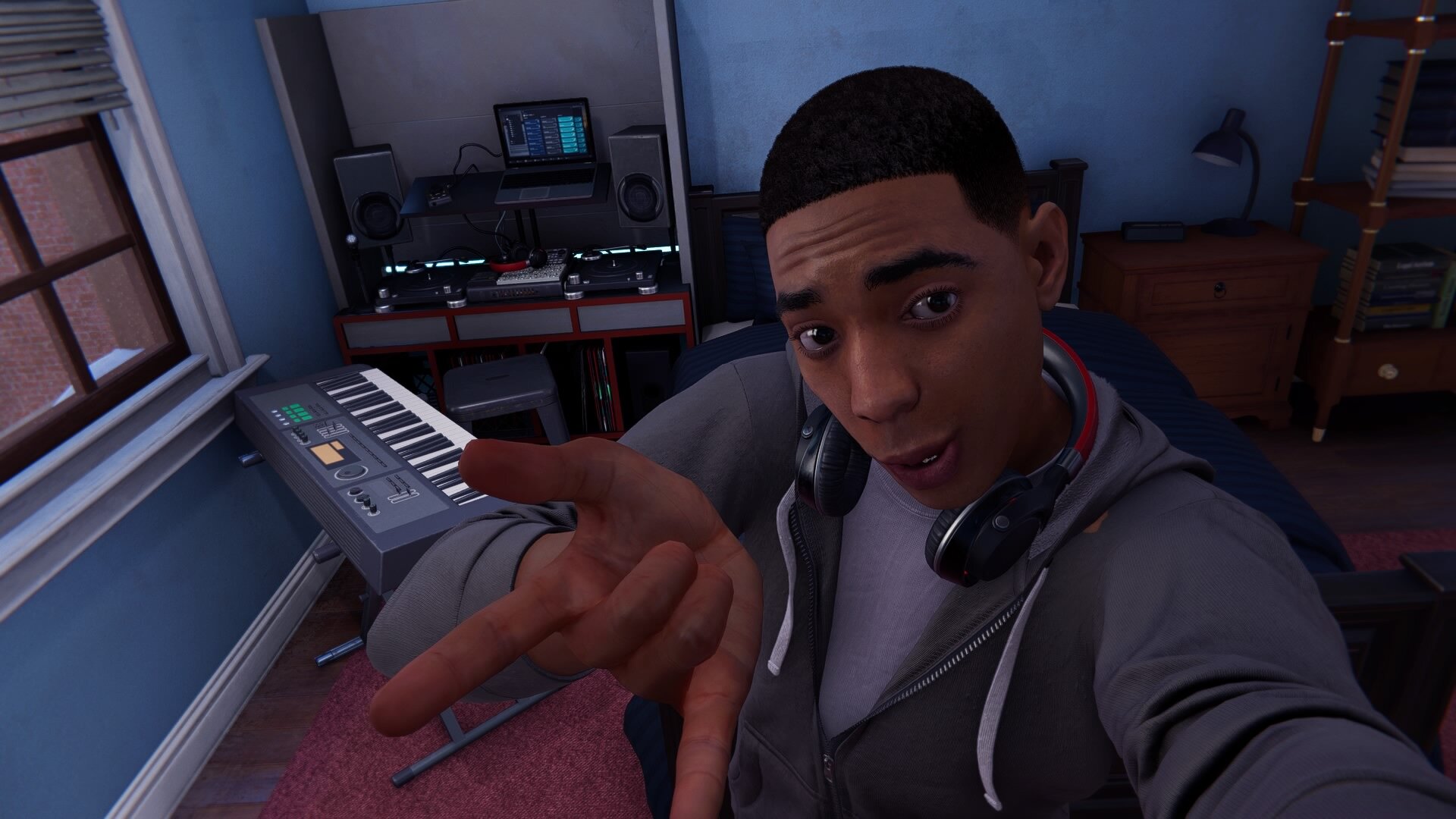
How can we not talk about Spider-Man: Miles Morales without talking about it’s upgraded Photo Mode? In the latest iteration of the game’s already powerful photo mode, you can now add up to three independent lights. You can set them up as either a sphere or a spotlight, adjust the lights’ intensity and saturation, and even determine the softness of the beam. And yes, Spider-Man: Miles Morales added more stickers, emojis, speech bubbles, and frame filters you can use (including a frame involving everyone’s favorite neighborhood cat, also named Spider-Man!)
No Expectations
Aside from open-world issues carried over from the first game, a lack of significant endgame content, and the odd decision to change Peter Parker’s face model, Spider-Man: Miles Morales surpassed my expectations. The new spider-powers and gadgets in Miles’ arsenal are a nice addition to Marvel’s Spider-Man’s already solid base game. While the main story is short, that doesn’t make it a lesser game than its predecessor. I actually appreciate the pacing of Miles Morales’ story as compared to the padded campaign of Marvel’s Spider-Man. You can’t go wrong picking this game up on its own, but if you haven’t played the first game and are planning to pick this up on the Playstation 5, the Ultimate Edition will give you a remastered version of Marvel’s Spider-Man.
Short AAA games aren't a rare sight nowadays, and there is always an argument to be had when comparing their value versus meatier AAA titles. Given the rise in development costs and the industry’s tendencies towards focusing on presentation and storytelling, I wouldn’t be surprised if studios would begin a similar trend of developing more short-but-sweet open-world games like Spider-Man: Miles Morales.
8/10
Highlights
(+) Miles Morales gets completely new swing and combat animations
(+) Swinging around New York City is still as exhilarating as ever.
(+) A tightly-paced campaign that provides a fresh take on Miles Morales’ story and the characters involved.
(-) Completionists and fans of open-world games might feel underwhelmed by the shorter list of stuff you can collect and do after finishing the main story.
(-) Peter Parker’s weird new baby face that nobody asked for.
What I’ve Played
Finished the main story mode in under 10 hours with 99% completion rate (missed a few underground boxes.
Venom Striked over a hundred jobbers during the main story
Collected all super suits
Spent hours taking sweet shots in photo mode (the true endgame)
Spent a good chunk of time reading through Miles’ social feed (don’t worry, there’s an achievement for doing that)
[This review is based on a PS4 review code provided by PlayStation Asia.]




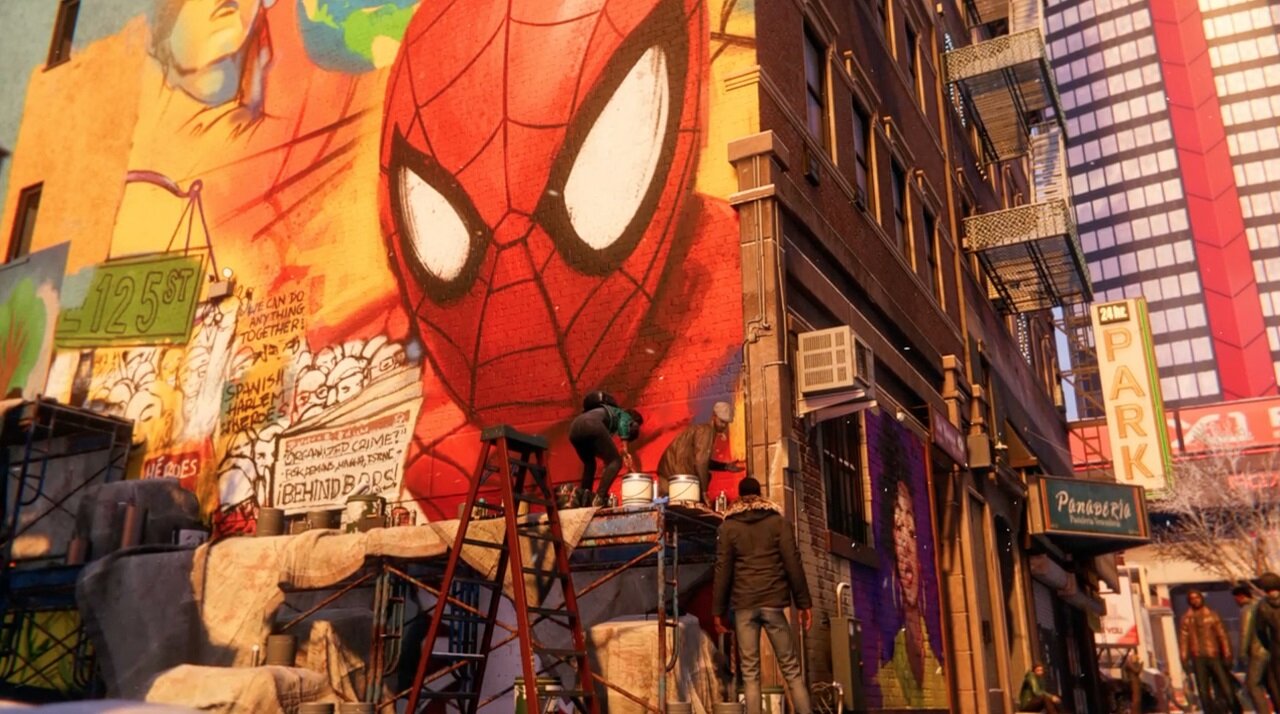


















Assassin’s Creed Shadows greatly blends the classic Assassin’s Creed stealth with the RPG elements of recent entries. Its dynamic world, seasonal changes, and improved stealth mechanics make exploration a joy, but Yasuke’s restrictive gameplay, overall story, and a half-baked notoriety system hold it back.